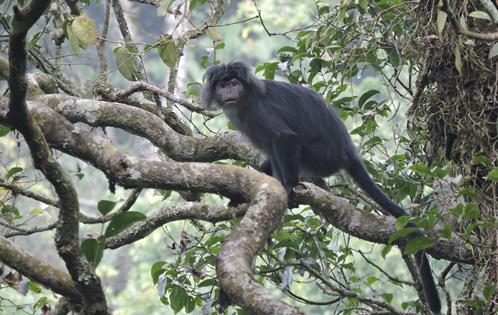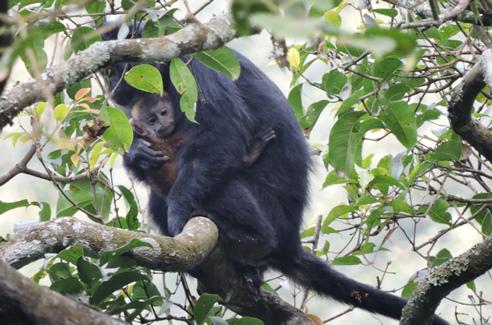Ika Yuni Agustin
Javan Lutung (Ebony Leaf Monkey) is listed as Vulnerable in the IUCN Redlist and protected under the Indonesian Law since 1999. The main threats for this species are forest degradation and forest conversion into arable land. Javan Lutung is distributed primarily in the islands of Java, Bali and Lombok of Indonesia. The purpose of this project is to develop conservation education strategy focusing on forest ecosystem services and Javan Lutung’s ecological functions in the Bromo-Tengger-Semeru National Park in East Java. To achieve the purpose, the objectives of this project are to (i) update Javan Lutung’s distribution information in the Bromo-Tengger-Semeru National Park (BTSNP) and estimate Javan Lutung’s population in the National Park, (ii) explore various stakeholders’ perception and knowledge on ecosystem services and Javan Lutung ecological functions, (iii) develop conservation education strategy focusing on ecosystem services of the forest and Javan Lutung’s ecological functions.

Primate survey will be carried out in the Bromo-Tengger-Semeru National Park using Line Transect Method (Buckland et al., 2010). We will record the number of individuals, age class distribution, behaviour, height on tree, GPS location and habitat characteristics. Point Centered Quarter Method (Mueller-Dumbois & Ellenberg, 1974) will be used for vegetation sampling. Data collected will include tree name (local name and scientific name), horizontal and vertical stratification, and tree height. We will record the plant species used as sleeping trees and food items.

Stakeholders’ perception and knowledge on ecosystem services and Javan Lutung’s ecological functions will be solicited through face to face survey. The stakeholders includes BTSNP, farmers, school teachers, and visitors. Information gained from this social survey will be analysed to identify the knowldege gaps, the opportunities for an education intervention, what interests the stakeholders or what hinders them to implement an education intervention, what they think about conservation education, and many other relevant information.
In addition, a map of priority areas for future reforestation will be developed focusing in Malang District located in the eastern part of the National Park.
To assess the areas for reforestation and protection, we will overlay some maps (i.e. land use map, zonation map, distribution map created in this project, and fire prone map). We are looking for an area where future conservation education programme can be executed with reforestation using Javan Lutung feed trees as one of the hands-on experiences. More importantly, we are looking for stakeholders’ consensus that the area should be devoted for educational purposes. We will also identify priority areas for protection from further conversion by the same method.
Taking into considerations all the findings from the previous activities, an education strategy for the conservation of Javan Lutung habitat will be developed. The strategy then will be consulted with the stakeholders on one on one meeting with the relevant stakeholders. The strategy then will be refined based on the stakeholders’ input and finalised.